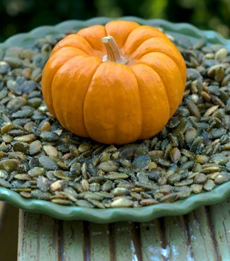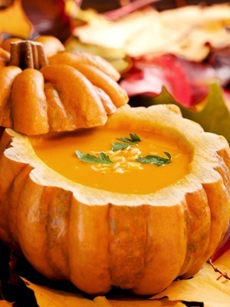|
Cichorium is a genus of plants that resemble wildflowers, with beautiful lavender or pale blue blossoms. But two of the six wild species, native to Europe, are cultivated for food: chicory and endive.
They can be enjoyed raw or cooked.
TWO MAIN TYPES OF CHICORY
Common chicory, Cichorium intybus, is grown for its leaves, variously known as Belgian endive (red and white), endive, French endive, leaf chicory, radicchio or witloof. Some varieties are grown for their roots, which are used as a coffee substitute.
True endive, Cichorium endivia, is grown as a salad green. Curly endive (frisée or chicory frisée) and the broad-leafed escarole are also true endives.
Though it is common to find chicories in restaurant dishes, they are far less often embraced by home cooks.
Why? They are not excessively costly, nor are they particularly hard to find. And they’re a particularly healthy food: a good source of dietary fiber, folate, iron, potassium and vitamins B6, C, E and K.
|
|

Some of the chicory group. From top left: escarole, leaf chicory, frisée (curly chicory), radicchio di Chiogga, radicchio di Treviso and Belgian endive. Photo courtesy Endive.com.
|
The fact is, a lot of people don’t seem to like chicories, possibly due to their inherent bitterness. Perhaps in our country, where sugar is dumped into everything from bread to mustard and governments are looking at regulating the excessive amount of salt in prepared foods, people have been weaned away from the bitter flavor.
Bitterness is an important taste in cooking and it has its place in balancing the saltiness, sweetness and acidity in many recipes. Give it a chance.
HOW TO TAME THE BITTERNESS OF CHICORIES
The easiest way to soften the bitterness in chicories is to shock them in an ice bath. Simply plunge the vegetables into icy water (add ice cubes to cold tap water or refrigerated water) and leave them there for an hour or so. Then, give them a little nibble. If they’re still too bitter for your taste, repeat; continue to do so until you’re happy with the result. Then, remove and spin the leaves dry (if you don’t have a salad spinner, air drying is fine). You will be shocked (pun intended) at the difference it makes.
If you are using the vegetable raw, remove the core from the head—the core is the most bitter part. With Belgian endive and radicchio, the easiest method is to cut the head in half lengthwise and then cut away the core.
HOW TO USE CHICORIES
In addition to salad, you can cook chicories in any number of ways. Their heartiness allows them to stand up to most cooking methods, even grilling. Grilled radicchio is delicious, finished with nothing more than a drizzle of olive oil, a squirt of lemon, a few pinches of coarse salt and some freshly ground pepper. Escarole sautéed with garlic in olive oil is a simple pleasure. Belgian endive, frisée (curly endive) and radicchio are beautiful in salads.
Recipes
Radicchio overview and recipes
Festive radicchio salad recipe
Pear salad with blue cheese and radicchio recipe
Spinach, citrus and radicchio salad recipe
Grilled bitter greens with caraway peach dressing recipe
Angel hair pasta with scallops and escarole recipe
|





